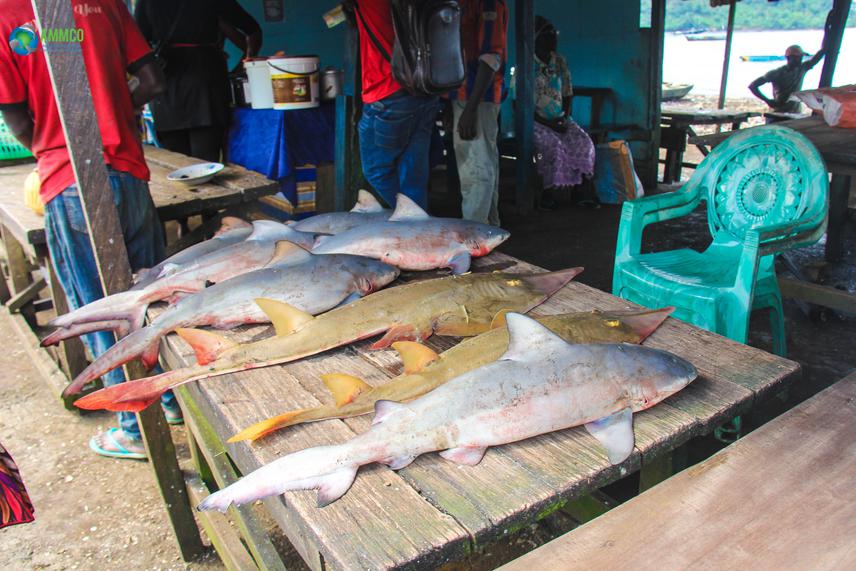Ghofrane Labyedh
Other projects
19 Oct 2022
Together Protect Life in Oceans for Sharks and Rays in the Southern Coastline of Cameroon
With the present project we aim to initiate a participatory approach to improve the scientific basis for the monitoring of fisheries on elasmobranch species. Thus, the main aims of this project are to enhance the existing monitoring programs and to determine the conservation status of Elasmobranchs in the north coastline of Cameroon.
In fact, the key factor for success here is to convince the government of Cameroon and the Ministry of Fisheries to implement the necessary steps to support future elasmobranch CITES proposals. And to establish a long-term fishery monitoring program. Consequently, the present project will help establish long-term monitoring to better manage how we fish in our oceans.
Furthermore, by the end of this project, we envision the publication of an atlas on the different species of sharks and rays captured, incorporating data on their distribution and trends along the landing points in the northern coastline of Cameroon.

Sharks and rays are an important part of catches in fisheries around the world. When they’re monitored, fisheries can give researchers an important window into what’s happening with the status of many species and are a reserve of really valuable information. However, more often, we know little about the impact of these fisheries and sometimes even less about how these fisheries operate especially in African Countries.
In 2012 African Marine Mammal Conservation Organization (AMMCO) established the Siren network made up of about 30 fishermen along the Cameroon coast. The Siren App enables the collection and recording of observations of sharks, rays and other aquatic wildlife species. To date, over 7000 observations have been reported in the database, including over a thousand observations of elasmobranch, In addition the on-going research effort on sharks and rays fishery by AMMCO in the northern part of the coastline (down from Tiko city to the Bakassi area, border with Nigeria), informed us about the presence of 27 species of elasmobranchs, including 10 species threatened with extinction. The reason led us to the present project which will carry out; to the monitoring of fish landing points and the design of maps describing fish landing points to identify high risk areas for sharks and rays in the northern coasts of Cameroon. In close collaboration with fishermen, interviews of local fishers in each of the fish landing points will be conducted. In addition, we will work on spreading awareness across stakeholder communities such as interactive programs, workshops and celebration of shark and ray appreciation days, with the assistance of the local authorities from Cameroon's ministries of wildlife and fisheries. By the end of this project, we envision the publication of an atlas on the different species of sharks and rays captured, incorporating data on their distribution and trends along the landing points in the northern coastline of Cameroon, to describe the biological characteristics and diagnostic features of each species and to provide suitable pictures. The elasmobranch fishery atlas will be made available to the Ministry of Wildlife and Forestry, local fishermen and NGOs involved in the marine and coastal research in Cameroon.
Therefore, the main techniques of this project's monitoring are to continue collecting data on elasmobranch fisheries, and to develop assessment methods for the conservation status of threatened Elasmobranchs in the northern coastline of Cameroon.